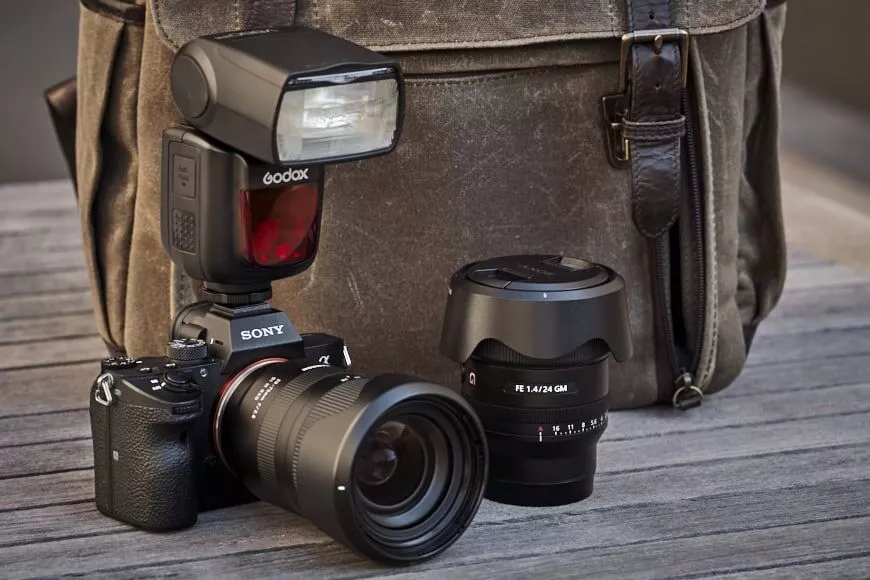There’s no denying that in recent years, the quality of smartphone cameras has shot up tremendously. The Google Pixel 6 boasts a 50MP sensor & an aperture of f/1.9. Apple has offered RAW capture since the iPhone 12 Pro. Across the board, phones are now equipped with multiple lenses, incredible stabilization & tracking features, and some smart features never seen on professional mirrorless or cinema cameras. This all means that the gates are lower than ever before for anyone looking to create content.
Does that mean that we don’t need high-end camera equipment anymore? Of course not! Professional camera bodies offer more control over a bunch of different settings that you just can’t easily access from a phone. They are built for professionals, which means a steeper learning curve and more time spent both planning and editing, but this gives you significantly more control over the final image, photo or video. Let’s go over some pros and cons to phone cameras, and some pros and cons for mirrorless cameras.
Smartphone Camera Pros
The best thing about this camera is that it’s always with you. Spontaneous shoots are no problem! They also often have RAW capture, high MP counts, & multiple lenses (RAW is a format like jpeg or PNG, but the file isn’t compressed in any way. This means you have a lot more flexibility over things like lighting and color when you go to edit). And since phone cameras have evolved with consumers in mind, they’ve become loaded with smart features you wouldn’t see in a pro camera. In-app correction, portrait mode, and tap-to-expose features all make it easy to get content out there quickly.

Smartphone Camera Cons
All that good can’t come without some bad, and the biggest drawback here is the miniscule sensor size. Tiny sensors mean tiny pixels, and the less surface area a pixel has, the worse it’ll perform in low-light situations. Phone cameras are still notoriously crummy-looking in less-than-ideal conditions.

Low-Light shooting on the iPhone XR
Their fixed apertures mean that the only way you’ll get decent depth of field is with portrait mode… which is a software simulation and doesn’t always hold up to scrutiny. You’re also limited to automatic lighting controls, unless you want to shell out extra money for 3rd-party apps that open up manual control. And while you might have more than one lens, most of the zooming you’ll be doing will still be digital. Digital zoom means you’re basically just cropping the picture before you take it. You aren’t using the full sensor and the resolution drops the more you zoom. Optical zoom manipulates the space between the different elements in your lenses so that you’re actually punching in, using the full sensor and retaining all of those pixels for a nice hi-res image.

Digital zoom on the iPhone XR
Mirrorless Camera Pros
With much larger sensors, mirrorless cameras give much better performance in low light. They’re also extremely modular and can be rigged up with flashes, monitors, batteries, different lenses, and other accessories to better suit the situation you’re in.

Mirrorless Camera Cons
The images these cameras produce might be pretty, but they’re also much larger than a phone and extremely conspicuous. Moving equipment around can add time to a shoot and sometimes all of that extra gear weighs you down. Professional mirrorless cameras also cost somewhere in the 4-figure range, while you’re not paying any extra to make use of the camera in your phone.
In conclusion
While they perform the same task, the features they offer give these camera types two very distinct use cases. Phones are great for social media managers & influencers who don’t want to have to obsess over every detail and need to produce decent-quality content quickly and efficiently. Mirrorless cameras are great for professional videographers or enthusiasts who want that greater level of control to produce a high-quality image.

